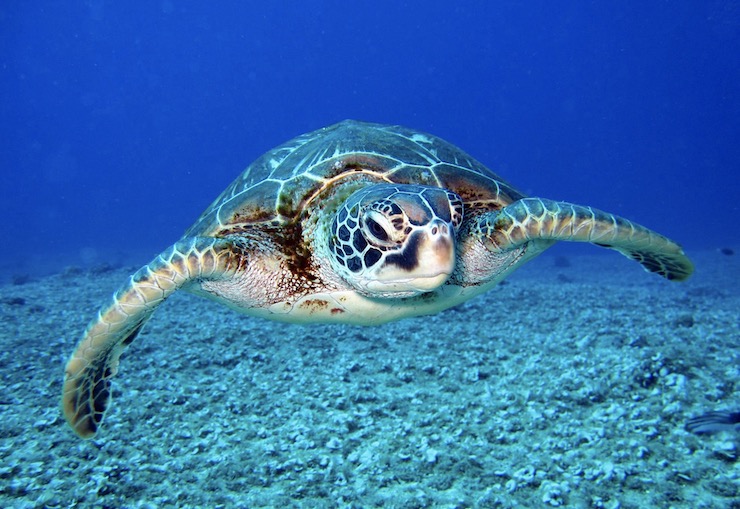
Visible from space, the Great Barrier Reef (GBR) is not only the largest coral reef on our planet but also the largest single structure made from living organisms on Earth. Located in the Coral Sea off the coast of Queensland, Australia, the reef supports an incredibly wide range of marine life, both transitory and permanent. Towards the northern tip of the GBR lies Raine Island, a 79 acre coral cay that is vitally important to the world’s population of endangered green sea turtles.
Officially owned by the Aboriginal nations of Wuthathi and Kemer Kemer Meriam, Raine Island is the oldest and largest green sea turtle nesting site responsible for 90% of the turtle’s population. Evidence of Nam (the Aboriginal name for turtles) nesting sites on Raine Island dates back to over 1,000 years ago. However, since the 1990’s there has been a significant decline in the success of Raine Island Nam nests and the survival of the species in general throughout the world. Many factors have led to green sea turtles becoming an endangered species. Some of these factors are from global warming and pollution, fishing nets, poaching, and habitat loss. For Raine Island, changes in the landscape have caused tidal inundation leading to nest sites that would have at one time been safe and dry to become submerged underwater, drowning the eggs. The landscape has also worn away leaving more large rocks for Nam to navigate, often trapping or flipping them.
A multi-level government collaboration has established the Raine Island Recovery Program, a $7.95 million initiative to restore Raine Island to its former glory. One of the first steps taken was to physically change the island landscape. Using heavy construction equipment the beaches have been restructured to make the sandy nesting grounds more accessible to Nam and above the tidal level. Fencing has also been erected in spots to keep Nam from areas they could become trapped. The beaches are also monitored by people to give Nam who still run into trouble a helping hand, flipping them back over, or freeing them from rocks.
One of the most important missions of the Raine Island Recovery Program is to track and monitor the green sea turtle population. The data collected through monitoring the Raine Island turtles impacts the health and numbers of the species worldwide. Researchers began tagging Nam by spraying safe color coded paint across their backs. When Nam with painted backs show up in the water, their origins can be tracked. While this at first made sense, it had been a tactic in use for a long time. Tagging turtles with paint provides far from accurate data as Dr. Andrew Dunstan of the Department of Environment and Science in Australia who has been leading the project pointed out.
Besides the fact that painting Nam is laborious and can be stressful to the animals, there is also no way to tag a total population to get true numbers. As Dunstan said when they go out in a boat to track Nam “eyes are attracted much more to a turtle with a bright white stripe than an unpainted turtle, resulting in biased counts and reduced accuracy.” For this reason, Dunstan and his team decided to send a drone up over Raine Island and the waters surrounding it, just to see what they could see. Needless to say, their minds were blown away!
In December 2019, at the peak of Nam nesting season, Dunstan and his team sent a drone up over the island, expecting to see several hundred Nam returning to the world’s largest green sea turtle rookery. But what they saw through the drone’s camera was far more than even a few thousand creatures. Upon investigating the images collected by the drones, the team counted upwards of 64,000 Nam waiting to climb up onto the shore to lay eggs. Though researchers knew that they had not been collecting accurate population numbers, they had no idea they were this far off.
As Dunstan said, counting “thousands of painted and unpainted turtles from a small boat in rough weather was difficult. Using a drone is easier, safer, much more accurate, and the data can be immediately and permanently stored.” With the help of a drone, researchers can have data that impacts how endangered creatures are monitored and counted. As Raine Island is also an importing roosting ground for seabirds, the drones are now being used to monitor them as well. One such seabird is the Herald petrel, a bird listed as critically endangered in Australia. With data collected by drones, the Raine Island Recovery Program has been able to track the breeding movements of these vulnerable birds and help conservationists strategize preservation measures. As of right now, the drone footage has not provided enough data to reclassify either species’ endangerment level. However, this valuable data will lead to a better understanding of what is and is not working to protect endangered populations.
|